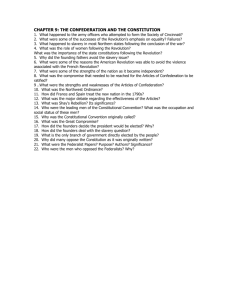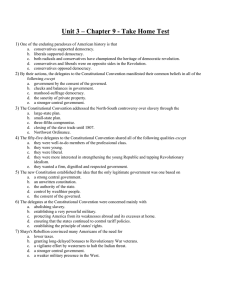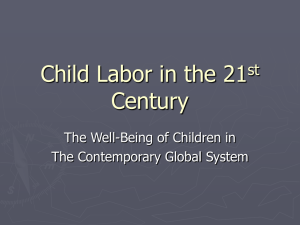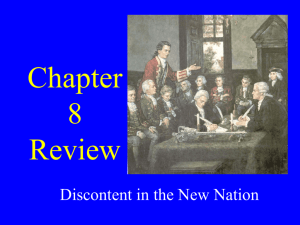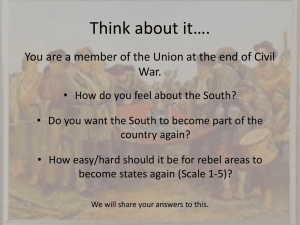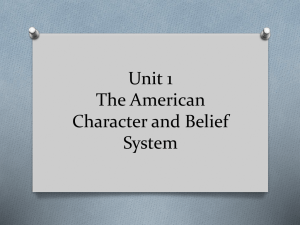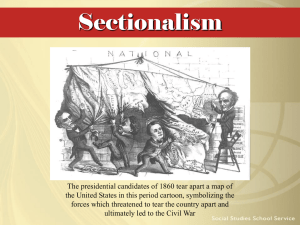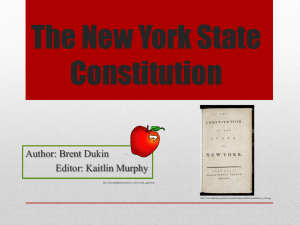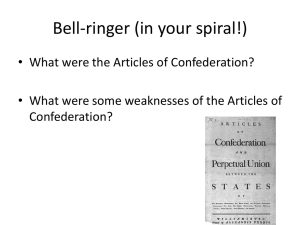Chapter 9 Homework Among the important changes brought about
advertisement
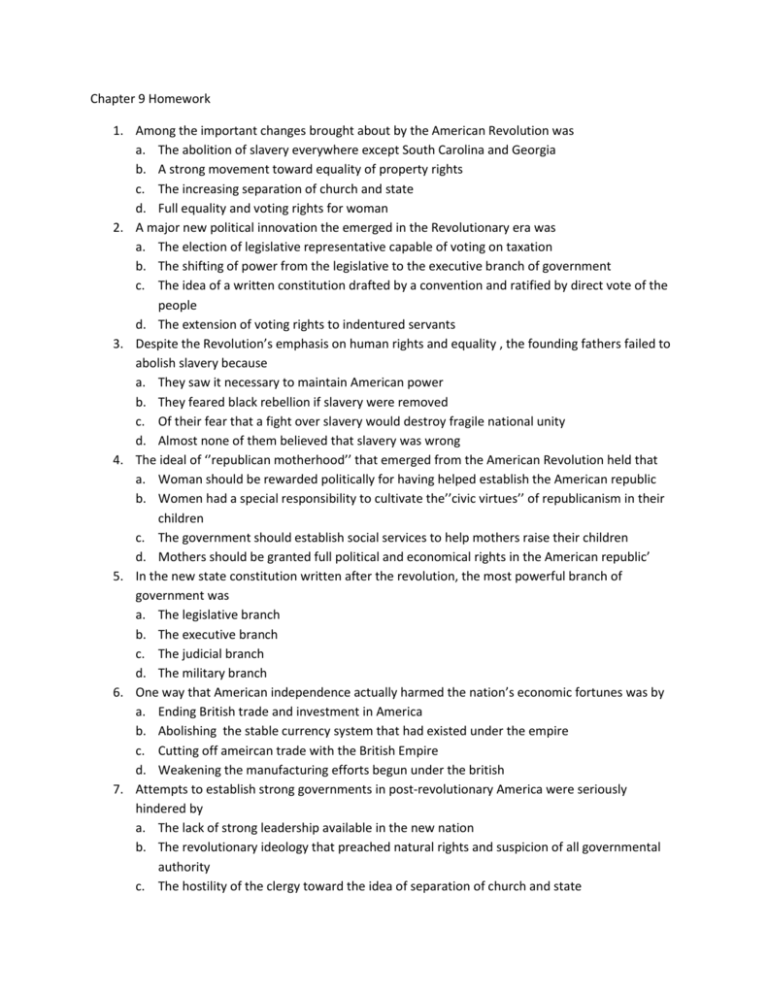
Chapter 9 Homework 1. Among the important changes brought about by the American Revolution was a. The abolition of slavery everywhere except South Carolina and Georgia b. A strong movement toward equality of property rights c. The increasing separation of church and state d. Full equality and voting rights for woman 2. A major new political innovation the emerged in the Revolutionary era was a. The election of legislative representative capable of voting on taxation b. The shifting of power from the legislative to the executive branch of government c. The idea of a written constitution drafted by a convention and ratified by direct vote of the people d. The extension of voting rights to indentured servants 3. Despite the Revolution’s emphasis on human rights and equality , the founding fathers failed to abolish slavery because a. They saw it necessary to maintain American power b. They feared black rebellion if slavery were removed c. Of their fear that a fight over slavery would destroy fragile national unity d. Almost none of them believed that slavery was wrong 4. The ideal of ‘’republican motherhood’’ that emerged from the American Revolution held that a. Woman should be rewarded politically for having helped establish the American republic b. Women had a special responsibility to cultivate the’’civic virtues’’ of republicanism in their children c. The government should establish social services to help mothers raise their children d. Mothers should be granted full political and economical rights in the American republic’ 5. In the new state constitution written after the revolution, the most powerful branch of government was a. The legislative branch b. The executive branch c. The judicial branch d. The military branch 6. One way that American independence actually harmed the nation’s economic fortunes was by a. Ending British trade and investment in America b. Abolishing the stable currency system that had existed under the empire c. Cutting off ameircan trade with the British Empire d. Weakening the manufacturing efforts begun under the british 7. Attempts to establish strong governments in post-revolutionary America were seriously hindered by a. The lack of strong leadership available in the new nation b. The revolutionary ideology that preached natural rights and suspicion of all governmental authority c. The hostility of the clergy toward the idea of separation of church and state 8. 9. 10. 11. 12. 13. 14. d. The fear that a strong government would suppress economic development The primary political obstacle to the formation of the first American government under the articles of Confederation was a. Disputes among the jealous states over control of western lands b. Disagreements over the relative power of Congress and the executive branches c. Conflict over the right of congress to regulate trade and manufacturing d. Conflict over the slavery between northern and southern states The greatest weakness of the government under the articles of confederation was that a. It was unable to deal with the issue of western lands b. It had no power to regulate commerce or collect taxes from the sovereign states c. It had power to establish relations with foreign governments d. There was no judicial branch to balance the legislative and executive branches The Northwest Ordinance of 1787 provided that a. The states should retain permanent control of their western lands b. Money from the sale of western lands should be used to promote manufacturing c. After sufficient population growth, western territories could be organized and then join the union as states d. The settlers In the northwest could vote on whether or not they should have slavery Shays rebellion contributed to the movement for a new constitution by a. Revealing that revolutionary war veterans like shays wanted a more powerful federal government b. Raising the fear of anarchy and disorder among wealthy conservatives c. Raising the prospect of British or French interference in American domestic affairs d. Showing that state legislatures could effectively resist the demands of radical farmers Besides George Washington, the most influential figures in the constitutional Convention were a. John Jay, Thomas Jefferson, and John Hancock b. Samuel Adams, Patrick Henry, and Thomas Paine. c. John Adams, Abigail Adams, and Gouverneur Morris. d. Benjamin Franklin, James Madison, and Alexander Hamilton. The “Great Compromise” finally agreed to by the Constitutional Convention provided that a. The House of Representatives would be elected by the people and the Senate by the State Legislatures. b. The large states would be taxed on the basis of population and the small states on the basis of territory c. There would be separation of powers between the executive and legislative branches of government. d. There would be representation by population in the House of Representatives but equal representation of all states in the Senate. Antifederalists generally found their greatest support among a. Small states like Delaware and New Jersey. b. The commercial areas of the eastern seaboard. c. The poorer debtors and farmers. d. The wealthy and well educated. 15. The crucial federalist successes in the fight for ratification occurred in the states of a. Georgia, Maryland, and Delaware. b. Massachusetts, Virginia, and New York. c. Pennsylvania, North Carolina, and Rhode Island. d. Connecticut, South Carolina, and New Hampshire. 1. ____________ The idea that American women had a special responsibility to cultivate “civic virtue” in their children. 2. ____________ A type of special assembly, originally developed in Massachusetts, for drawing up a fundamental law that would be superior to ordinary law. 3. ____________ The first constitutional government of the United States. 4. ____________ The status of a western area under the Northwest Ordinance after it established an organized government but before it became a state. 5. ____________ A failed revolt in 1786 by poor debtor farmers that raised fears of “mobocracy.” 6. ____________ The plan proposed by Virginia at the Constitutional Convention for a bicameral legislature with representation based on population. 7. ____________ The proposed plan by New Jersey for a unicameral legislature with equal representation of states regardless of size and population. 8. ____________ The compromise between North and South that resulted in each slave being counted as 60 percent of a free person for purposes of representation. 9. ____________ A masterly series of pro-Constitution articles printed in New York by Jay, Madison, and Hamilton. 10. ____________ A list of guarantees that federalists promised to add to the Constitution in order to win ratification.
